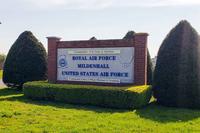The U.S. is doing what it usually does after North Korea tests a nuclear bomb -- it's sending in the sniffer.
As my colleague Richard Sisk reported, the U.S. planned to deploy the WC-135 Constant Phoenix aircraft to sniff the skies after North Korea claimed Wednesday to have successfully detonated a thermonuclear weapon:
The U.S. reportedly was sending a WC-135 "sniffer" plane Wednesday to check on North Korea's claim of setting off an underground hydrogen bomb as Defense Secretary Ashton Carter and his South Korean counterpart conferred on a possible response.Susan Romano, a spokeswoman for the Air Force Technical Applications Center, said that the Air Force "as a matter of policy" does not discuss the operations of the WC-135 Constant Phoenix. However, the aircraft flying out of Kadena Air Force Base on Okinawa was used in the past to verify three previous North Korean nuclear tests.
The aircraft, a derivative of the Boeing C-135 four-engine jet alternately known as the "sniffer plane" and the "weather bird," carries on board an atmospheric collection suite "which allows the mission crew to detect radioactive 'clouds' in real time," according to an Air Force fact sheet.
The Air Force has just two of the aircraft in the fleet -- the WC-135C and the WC-135W. A half century old, the Cold War-era planes operate out of Offutt Air Force Base in Nebraska and are primarily used to verify compliance of the 1963 Limited Nuclear Test Ban Treaty.
They're equipped with external flow-through devices to collect particulates on filter paper and a compressor system for whole air samples collected in holding spheres, according to the Air Force.
It wasn't clear when exactly the aircraft started or planned to start collecting air samples near North Korea.
But the WC-135 has plenty of experience with the mission. The aircraft was not only tasked with collecting air samples in the wake of North Korea's underground atomic tests in 2006, 2009 and 2013, it was also used to track radioactive debris after the nuclear plant disasters at Fukushima in Japan in 2011 and at Chernobyl in the former Soviet Union, now Ukraine, in 1986.
With many experts doubting that North Korea actually set off a thermonuclear weapon based on the relatively low yield and seismic activity, the data collected by the aircraft would be helpful to confirm those doubts and shed more light on the status of the country's nuclear program.









